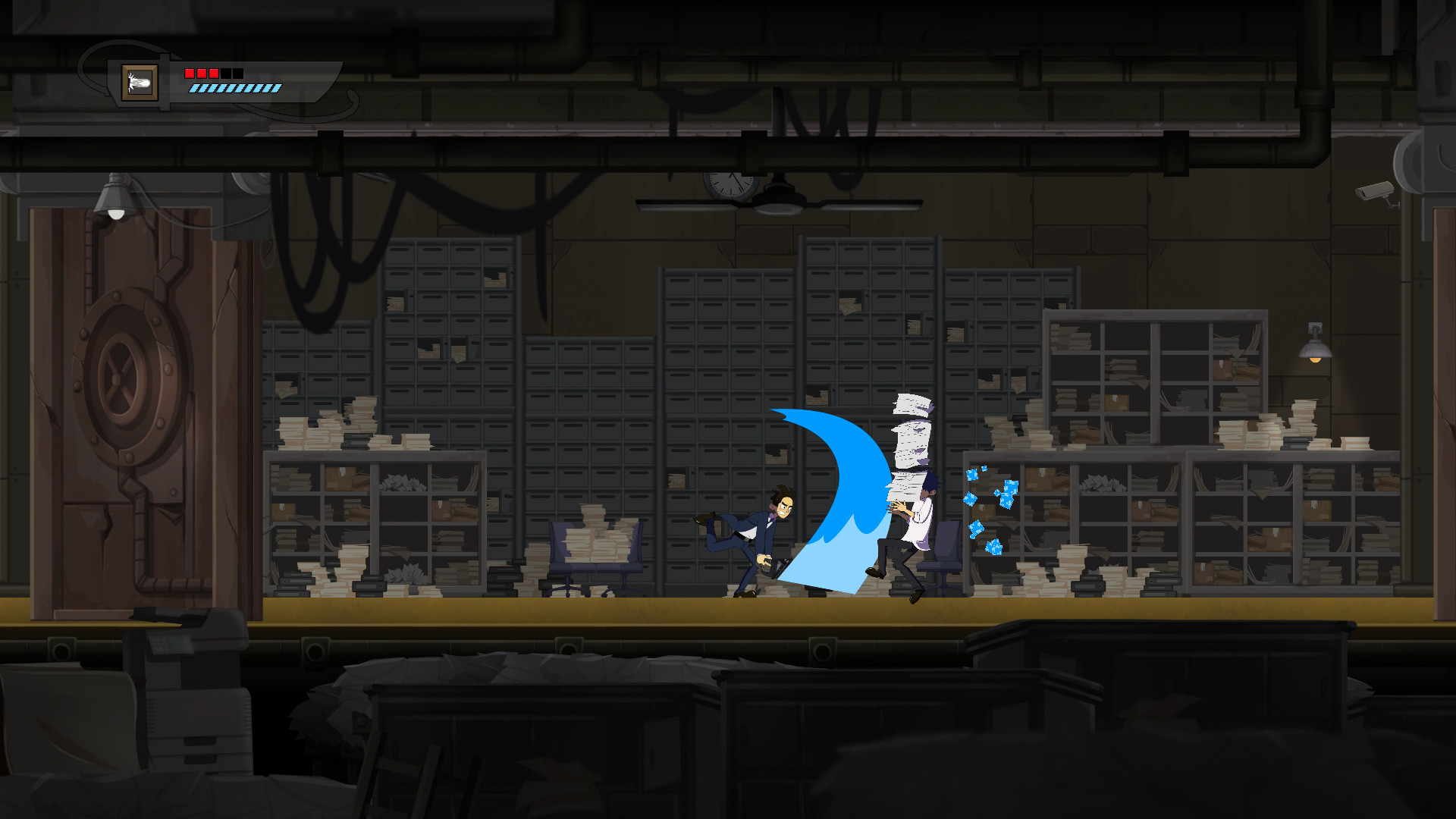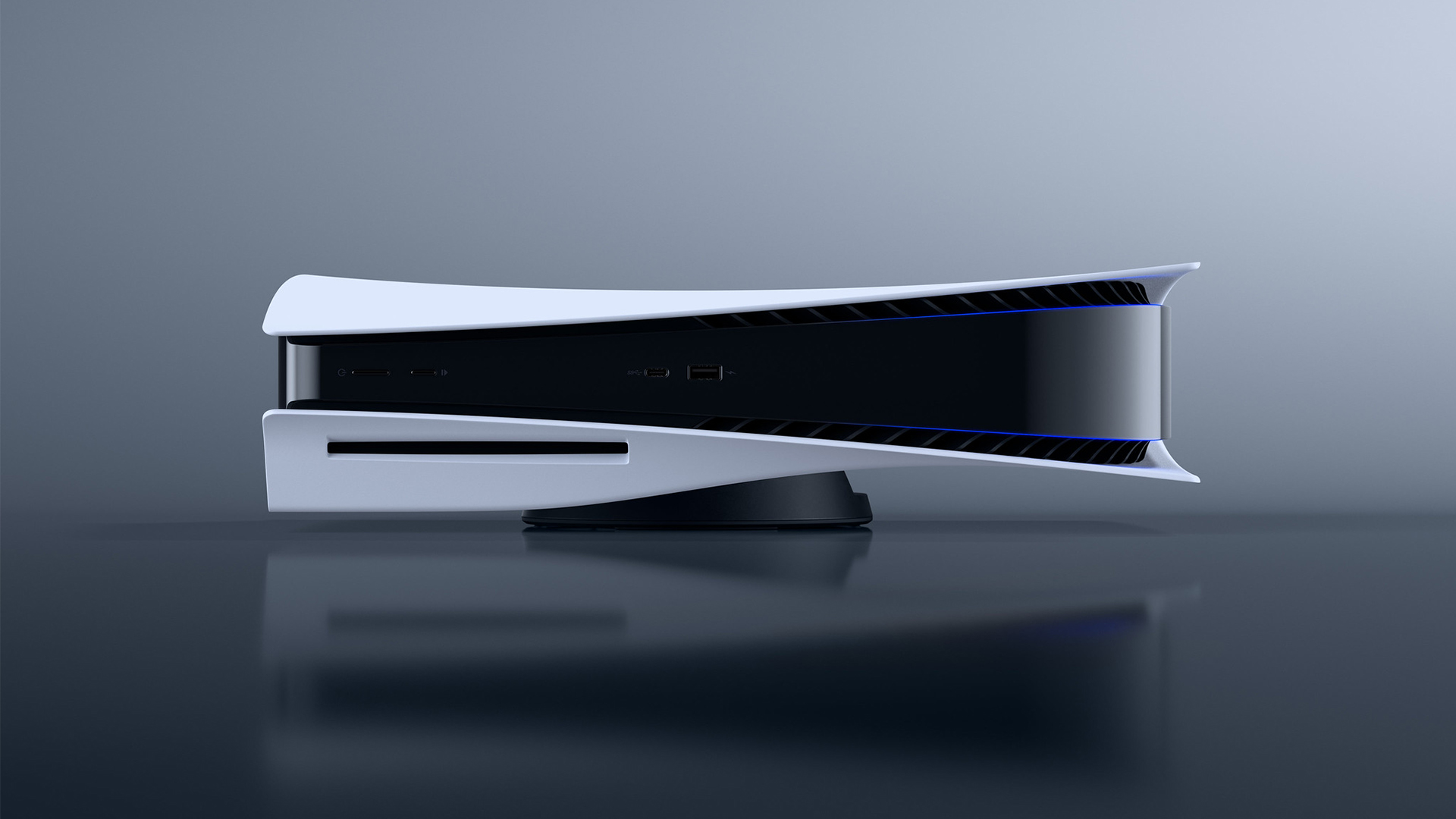Side-scrolling platformers are largely a genre that doesn’t lend well to accessibility, due to the required use of a d-pad or analog stick to move in concert with a face button to jump and in the case of action-platformers, also using a second button to attack. The Company Man has come out of nowhere to deliver a game that manages to deliver both a high-quality experience within the genre, but also be fairly accessible with just its core game design. One reason the game succeeds so thoroughly is its smooth gameplay and another is its animations that compliment every other part of the on-screen action. Starring a man named Jim who is out to climb the corporate ladder but also wants to change the company for the better, players are taken on a fairly gripping story given how little lore is outright spelled out.
Right away, players are treated to a vivid game world that uses bold, exaggerated animations for everything and appears to almost be a playable cartoon in that way. The smoothness of the animation evokes the Genesis Aladdin game and is some of the smoothest on the market in many years. Animation is one area that a lot of developers have to skimp on due to how time consuming it is, but hard work was put into the animation here and it pays dividends in terms of making the experience more accessible. There is slick animation, but the key frames are so boldly posed that it’s easy to see where everything is in relation to the player. Beyond animation, there is a ton of detail in character models, like Jim grimacing when he runs and looking exhausted and trying to catch his breath after a long period of running without a break.
Beyond animation and bold colors, large text and menu icons are used throughout both the menus and main campaign to show progress. Beating a stage is met with a large, colorful icon noting that you’ve moved up in the company while getting a new power-up is also met with a large icon and large text. This makes it a very visually accessible game in that regard and it’s impressive to see just how much care was put into making the game’s menus easy to read without having accessibility options baked in. This extends further into having a lot of contrast on signage. Players will have a light background to work with using bold black text most of the time. Character dialogue uses manilla-colored bubbles with bold black text, while power-up gains are shown with white backdrops and bold black text. There are no text size options, but other than very brief dialogue at the start of the game, all in-game text is fairly large by default.
Having the in-game world be so easy to see in every way makes the core gameplay more enjoyable because there are so few barriers holding the player back. Character movement is a breeze using either the left stick or the d-pad, while jumping, attacking with the keyboard for a short-range attack, or using a blaster for various attack types feels natural and organic thanks to smooth movement between actions. The core gameplay in The Company Man is a lot of fun and every part of the concept is well-crafted, from the abundance of coffee break spots that refill your health and act as checkpoints to the higher-up who wants to fire you via killing underlings.
The Company Man’s few overall mechanics work out nicely due to how well-crafted every part of the formula is. Melee combat is super smooth and there is a flow to the action that evokes a bit of Donkey Kong Country. The blaster-based combat is a bit iffier though. While everything is responsive no matter which blaster type is in use, there is a bit of knockback to it that gets old quickly. Knockback is a holdover from the NES era and doesn’t need to be in a modern game, and it does hold this one back a bit.
Whether using a Mega Man-style blaster, a short-range spreadshot, or a medium range blast that takes out enemies quickly, all of them suffer a little. It’s a shame too because knockback has been in some modern games that had it as an option, things like Bloodstained: Circle of the Moon made sense to have it since they were 8-bit sendups, but this doesn’t need it or benefit at all. Hopefully, we’ll see the game get an update to turn this into something that’s an option instead of a requirement, since it does take some of the fun out of combat, especially boss battles. Those can be tough enough without it creeping up, although frequent checkpoints do make it a less-frustrating experience.
From a fine-motor perspective, The Company Man is quite user-friendly for its genre, since it doesn’t rely on a lot of platforming and is very forgiving when it comes to combat, but it isn’t perfect. Knockback hurts it as does the lack of built-in turbo to make melee combat easer on the hands. Having the blaster be limited to time-based ammo is also a bit odd for an action-heavy game too.
From an auditory point of view, The Company Man benefits from a fairly bland soundtrack full of elevator music that is designed to be mundane to fit the office setting. This puts deaf and hard-of-hearing players at the same level as everyone else and doesn’t put anyone in the position of missing anything major tone-wise with the gameplay. The story is told in mostly text, with a bit of garbled gibberish thrown in to approximate dialogue, but nothing actually being spoken. The sound effect work is solid and would benefit from a bit of narration to get across the physical damage of things, but the visual cues are enough for every player to get a sense for the short-range attack dealing out more immediate damage than the longer-range ones.
This article has been transferred from DAGERSystem (now AbilityPoints). Scores, formatting, and writing style may differ from original CIPT content.








